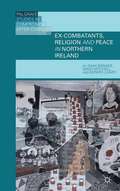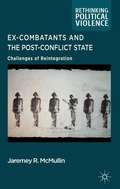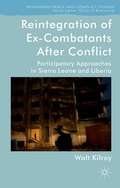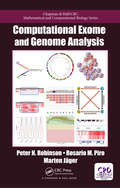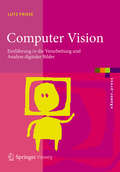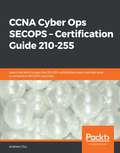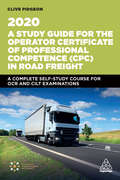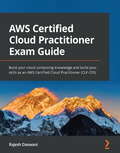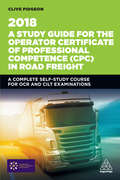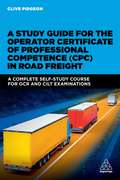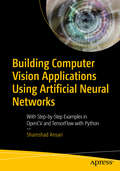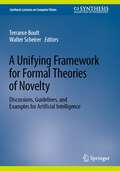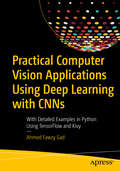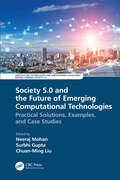Special Collections
Competitive Exam
- Table View
- List View
Ex-Combatants, Religion, and Peace in Northern Ireland
by David Mitchell and John D. Brewer and Gerard LeaveyStudies of Northern Ireland's ex-combatants ignore religion, while advocates of religious interventions in transitional justice exaggerate its influence. Using interview data with ex-combatants, this book explores religious influences upon violence and peace, and develops a model for evaluating the role of religion in transitional justice.
Ex-Combatants and the Post-Conflict State
by Jaremey R. McmullinThis book provides a critical analysis of the reintegration challenges facing ex-combatants. Based on extensive field research, it includes detailed case studies of ex-combatant reintegration in Namibia, Mozambique, Sierra Leone, and Liberia.
Reintegration of Ex-Combatants After Conflict
by Walt KilroyReintegration programmes for ex-combatants are supposed to support the wider peace process. This study looks at the way they were carried out in Sierra Leone and Liberia and assesses the degree to which they were conducted in a participatory way. To a large extent, ex-combatants felt that they had received unreliable information and had been afforded little input in the process. Others, whose experience had been more participatory, were faring better in terms of work, economic situation andcommunity relations. Reintegration of Ex-Combatants After Conflict is based on detailed interviews with a wide range of stakeholders, and on a survey and focus group discussions with ex-combatants. Their voices are clearly heard, in both the qualitative and quantitative data. Kilroy explores the important implications for the effect of reintegration programmes on the wider peacebuilding project. Social capital, which affects the peace process, is also highlighted, as the extent to which this can be created or undermined depends on the way the programmes were conducted. Kilroy's insightful study will appeal to all those with an interest in conflict resolution, post-war recovery, and development.
Computational Exome and Genome Analysis
by Peter N. Robinson and Rosario Michael Piro and Marten JagerExome and genome sequencing are revolutionizing medical research and diagnostics, but the computational analysis of the data has become an extremely heterogeneous and often challenging area of bioinformatics.
Computational Exome and Genome Analysis provides a practical introduction to all of the major areas in the field, enabling readers to develop a comprehensive understanding of the sequencing process and the entire computational analysis pipeline.
Computational Exome and Genome Analysis
by Peter N. Robinson and Rosario Michael Piro and Marten JagerExome and genome sequencing are revolutionizing medical research and diagnostics, but the computational analysis of the data has become an extremely heterogeneous and often challenging area of bioinformatics. Computational Exome and Genome Analysis provides a practical introduction to all of the major areas in the field, enabling readers to develop a comprehensive understanding of the sequencing process and the entire computational analysis pipeline.
Computer Vision
by Lutz PrieseDer Autor erläutert in dieser Einführung auf Bachelorniveau die in der Computer Vision verwendeten technischen Ausdrücke: Grundlagen des menschlichen Sehens, Farbe, exakte Begriffsbestimmungen zum Thema "Bild", Transformationen, lineare und nicht-lineare Filter, Fouriertransformation, Morphologie, Merkmale im Bild wie Kanten, Ecken, geometrische Formen mittels Hough-Transformation, diverse Hüllen und Skelettierung. Ferner höhere Merkmale wie SIFT, Shape-Context und statistische Merkmale, Texturmerkmale. Die Bestimmung von Segmenten (zusammenhängende Regionen ähnlicher Farben oder Grauwerte) wird in einem eigenen Kapitel ausführlich behandelt.
Computer Vision
by Lutz PrieseDer Autor erläutert in dieser Einführung auf Bachelorniveau die in der Computer Vision verwendeten technischen Ausdrücke: Grundlagen des menschlichen Sehens, Farbe, exakte Begriffsbestimmungen zum Thema "Bild", Transformationen, lineare und nicht-lineare Filter, Fouriertransformation, Morphologie, Merkmale im Bild wie Kanten, Ecken, geometrische Formen mittels Hough-Transformation, diverse Hüllen und Skelettierung. Ferner höhere Merkmale wie SIFT, Shape-Context und statistische Merkmale, Texturmerkmale. Die Bestimmung von Segmenten (zusammenhängende Regionen ähnlicher Farben oder Grauwerte) wird in einem eigenen Kapitel ausführlich behandelt.
CCNA Cyber Ops SECOPS – Certification Guide 210-255
by Andrew ChuDevelop your cybersecurity knowledge to obtain CCNA Cyber Ops certification and gain professional skills to identify and remove potential threats Key Features Explore different security analysis tools and develop your knowledge to confidently pass the 210-255 SECOPS exam Grasp real-world cybersecurity skills such as threat analysis, event correlation, and identifying malicious activity Learn through mock tests, useful tips, and up-to-date exam questions Book Description Cybersecurity roles have grown exponentially in the IT industry and an increasing number of organizations have set up security operations centers (SOCs) to monitor and respond to security threats. The 210-255 SECOPS exam is the second of two exams required for the Cisco CCNA Cyber Ops certification. By providing you with fundamental knowledge of SOC events, this certification validates your skills in managing cybersecurity processes such as analyzing threats and malicious activities, conducting security investigations, and using incident playbooks. You'll start by understanding threat analysis and computer forensics, which will help you build the foundation for learning intrusion analysis and incident response principles. The book will then guide you through vocabulary and techniques for analyzing data from the network and previous events. In later chapters, you'll discover how to identify, analyze, correlate, and respond to incidents, including how to communicate technical and inaccessible (non-technical) examples. You'll be able to build on your knowledge as you learn through examples and practice questions, and finally test your knowledge with two mock exams that allow you to put what you've learned to the test. By the end of this book, you'll have the skills to confidently pass the SECOPS 210-255 exam and achieve CCNA Cyber Ops certification. What you will learn Get up to speed with the principles of threat analysis, in a network and on a host device Understand the impact of computer forensics Examine typical and atypical network data to identify intrusions Identify the role of the SOC, and explore other individual roles in incident response Analyze data and events using common frameworks Learn the phases of an incident, and how incident response priorities change for each phase Who this book is for This book is for anyone who wants to prepare for the Cisco 210-255 SECOPS exam (CCNA Cyber Ops). If you're interested in cybersecurity, have already completed cybersecurity training as part of your formal education, or you work in Cyber Ops and just need a new certification, this book is for you. The certification guide looks at cyber operations from the ground up, consolidating concepts you may or may not have heard about before, to help you become a better cybersecurity operator.
A Study Guide for the Operator Certificate of Professional Competence (CPC) in Road Freight 2020
by Clive PidgeonA Study Guide for the Operator Certificate of Professional Competence (CPC) in Road Freight 2020 is a vital study guide that offers the thorough preparation needed to pass the tough CPC exams in the UK. It covers the examination method used by the Oxford, Cambridge and RSA (OCR) and the Chartered Institute of Logistics and Transport (CILT). This is the Level 3 standard qualification overseen by The Office of Qualifications and Examinations Regulation (OFQUAL) and the Welsh Assembly Government, which is required by any person wishing to operate vehicles over 3,500 kg, the maximum authorised mass for hire and reward, in the UK and internationally.A Study Guide for the Operator Certificate of Professional Competence (CPC) in Road Freight 2020 has been extensively revised to include all the new legislation. It covers the eight study sections that the directive requires: civil law; commercial law; social law; fiscal law; business; financial; management of the undertaking access to the market; technical standards and technical aspects of the operation road safety. It features many case studies, examples, diagrams and graphics. New to this edition: updated sections on operator licencing, drivers' hours, tachographs, vehicle testing, vehicle tax, vehicle registration, civil law, international driving and documentation.
A Study Guide for the Operator Certificate of Professional Competence (CPC) in Road Freight 2020
by Clive PidgeonA Study Guide for the Operator Certificate of Professional Competence (CPC) in Road Freight 2020 is a vital study guide that offers the thorough preparation needed to pass the tough CPC exams in the UK. It covers the examination method used by the Oxford, Cambridge and RSA (OCR) and the Chartered Institute of Logistics and Transport (CILT). This is the Level 3 standard qualification overseen by The Office of Qualifications and Examinations Regulation (OFQUAL) and the Welsh Assembly Government, which is required by any person wishing to operate vehicles over 3,500 kg, the maximum authorised mass for hire and reward, in the UK and internationally.A Study Guide for the Operator Certificate of Professional Competence (CPC) in Road Freight 2020 has been extensively revised to include all the new legislation. It covers the eight study sections that the directive requires: civil law; commercial law; social law; fiscal law; business; financial; management of the undertaking access to the market; technical standards and technical aspects of the operation road safety. It features many case studies, examples, diagrams and graphics. New to this edition: updated sections on operator licencing, drivers' hours, tachographs, vehicle testing, vehicle tax, vehicle registration, civil law, international driving and documentation.
A Study Guide for the Operator Certificate of Professional Competence (CPC) in Road Freight 2020
by Clive PidgeonA Study Guide for the Operator Certificate of Professional Competence (CPC) in Road Freight 2020 is a vital study guide that offers the thorough preparation needed to pass the tough CPC exams in the UK. It covers the examination method used by the Oxford, Cambridge and RSA (OCR) and the Chartered Institute of Logistics and Transport (CILT). This is the Level 3 standard qualification overseen by The Office of Qualifications and Examinations Regulation (OFQUAL) and the Welsh Assembly Government, which is required by any person wishing to operate vehicles over 3,500 kg, the maximum authorised mass for hire and reward, in the UK and internationally.A Study Guide for the Operator Certificate of Professional Competence (CPC) in Road Freight 2020 has been extensively revised to include all the new legislation. It covers the eight study sections that the directive requires: civil law; commercial law; social law; fiscal law; business; financial; management of the undertaking access to the market; technical standards and technical aspects of the operation road safety. It features many case studies, examples, diagrams and graphics. New to this edition: updated sections on operator licencing, drivers' hours, tachographs, vehicle testing, vehicle tax, vehicle registration, civil law, international driving and documentation.
AWS Certified Cloud Practitioner Exam Guide
by Rajesh DaswaniDevelop proficiency in AWS technologies and validate your skills by becoming an AWS Certified Cloud PractitionerKey FeaturesDevelop the skills to design highly available and fault-tolerant solutions in the cloudLearn how to adopt best-practice security measures in your cloud applicationsAchieve credibility through industry-recognized AWS Cloud Practitioner certificationBook DescriptionAmazon Web Services is the largest cloud computing service provider in the world. Its foundational certification, AWS Certified Cloud Practitioner (CLF-C01), is the first step to fast-tracking your career in cloud computing. This certification will add value even to those in non-IT roles, including professionals from sales, legal, and finance who may be working with cloud computing or AWS projects. If you are a seasoned IT professional, this certification will make it easier for you to prepare for more technical certifications to progress up the AWS ladder and improve your career prospects.The book is divided into four parts. The first part focuses on the fundamentals of cloud computing and the AWS global infrastructure. The second part examines key AWS technology services, including compute, network, storage, and database services. The third part covers AWS security, the shared responsibility model, and several security tools. In the final part, you'll study the fundamentals of cloud economics and AWS pricing models and billing practices.Complete with exercises that highlight best practices for designing solutions, detailed use cases for each of the AWS services, quizzes, and two complete practice tests, this CLF-C01 exam study guide will help you gain the knowledge and hands-on experience necessary to ace the AWS Certified Cloud Practitioner exam.What you will learnCreate an AWS account to access AWS cloud services in a secure and isolated environmentUnderstand identity and access management (IAM), encryption, and multifactor authentication (MFA) protectionConfigure multifactor authentication for your IAM accountsConfigure AWS services such as EC2, ECS, Lambda, VPCs, and Route53Explore various storage and database services such as S3, EBS, and Amazon RDSStudy the fundamentals of modern application design to shift from a monolithic to microservices architectureDesign highly available solutions with decoupling ingrained in your design architectureWho this book is forIf you're looking to advance your career and gain expertise in cloud computing, with particular focus on the AWS platform, this book is for you. This guide will help you ace the AWS Certified Cloud Practitioner Certification exam, enabling you to embark on a rewarding career in cloud computing. No previous IT experience is essential to get started with this book, since it covers core IT fundamentals from the ground up.
A Study Guide for the Operator Certificate of Professional Competence (CPC) in Road Freight 2018
by Clive PidgeonA Study Guide for the Operator Certificate of Professional Competence (CPC) in Road Freight 2018 is a vital study guide that offers the thorough preparation needed to pass the tough CPC exams in the UK. It covers the examination method used by the Oxford, Cambridge and RSA (OCR) and the Chartered Institute of Logistics and Transport (CILT). This is the Level 3 standard qualification overseen by The Office of Qualifications and Examinations Regulation (OFQUAL) and the Welsh Assembly Government, which is required by any person wishing to operate vehicles over 3,500 kg, the maximum authorised mass for hire and reward, in the UK and internationally. A Study Guide for the Operator Certificate of Professional Competence (CPC) in Road Freight 2018 has been extensively revised to include all the new legislation. It covers the eight study sections that the directive requires: civil law; commercial law; social law; fiscal law; business; financial; management of the undertaking access to the market; technical standards and technical aspects of the operation road safety. It features many case studies, examples, diagrams and graphics. New to this edition: test questions after each section.
A Study Guide for the Operator Certificate of Professional Competence (CPC) in Road Freight 2018
by Clive PidgeonA Study Guide for the Operator Certificate of Professional Competence (CPC) in Road Freight 2018 is a vital study guide that offers the thorough preparation needed to pass the tough CPC exams in the UK. It covers the examination method used by the Oxford, Cambridge and RSA (OCR) and the Chartered Institute of Logistics and Transport (CILT). This is the Level 3 standard qualification overseen by The Office of Qualifications and Examinations Regulation (OFQUAL) and the Welsh Assembly Government, which is required by any person wishing to operate vehicles over 3,500 kg, the maximum authorised mass for hire and reward, in the UK and internationally. A Study Guide for the Operator Certificate of Professional Competence (CPC) in Road Freight 2018 has been extensively revised to include all the new legislation. It covers the eight study sections that the directive requires: civil law; commercial law; social law; fiscal law; business; financial; management of the undertaking access to the market; technical standards and technical aspects of the operation road safety. It features many case studies, examples, diagrams and graphics. New to this edition: test questions after each section.
A Study Guide for the Operator Certificate of Professional Competence (CPC) in Road Freight 2018
by Clive PidgeonA Study Guide for the Operator Certificate of Professional Competence (CPC) in Road Freight 2018 is a vital study guide that offers the thorough preparation needed to pass the tough CPC exams in the UK. It covers the examination method used by the Oxford, Cambridge and RSA (OCR) and the Chartered Institute of Logistics and Transport (CILT). This is the Level 3 standard qualification overseen by The Office of Qualifications and Examinations Regulation (OFQUAL) and the Welsh Assembly Government, which is required by any person wishing to operate vehicles over 3,500 kg, the maximum authorised mass for hire and reward, in the UK and internationally. A Study Guide for the Operator Certificate of Professional Competence (CPC) in Road Freight 2018 has been extensively revised to include all the new legislation. It covers the eight study sections that the directive requires: civil law; commercial law; social law; fiscal law; business; financial; management of the undertaking access to the market; technical standards and technical aspects of the operation road safety. It features many case studies, examples, diagrams and graphics. New to this edition: test questions after each section.
A Study Guide for the Operator Certificate of Professional Competence (CPC) in Road Freight
by Clive PidgeonA Study Guide for the Operator Certificate of Professional Competence (CPC) in Road Freight is a vital study guide that offers the thorough preparation needed to pass the tough CRC exams. This is the Level 3 standard qualification overseen by OFQUAL and the Welsh Assembly Government which is required by any person wishing to operate vehicles over 3,500kgs maximum authorised mass for hire and reward, both nationally and/or internationally. A Study Guide for the Operator Certificate of Professional Competence (CPC) in Road Freight covers the examination method used by both OCR and CILT. It covers the 8 study sections that the directive requires: civil law; commercial law; social law; fiscal law; business; financial; management of the undertaking access to the market; technical standards and technical aspects of the operation road safety.The new book has been extensively revised to make it more accessible and understandable. It features many more case studies, examples, diagrams and graphics. There are also test questions for each section.
Building Computer Vision Applications Using Artificial Neural Networks
by Shamshad AnsariApply computer vision and machine learning concepts in developing business and industrial applications using a practical, step-by-step approach. The book comprises four main sections starting with setting up your programming environment and configuring your computer with all the prerequisites to run the code examples. Section 1 covers the basics of image and video processing with code examples of how to manipulate and extract useful information from the images. You will mainly use OpenCV with Python to work with examples in this section. Section 2 describes machine learning and neural network concepts as applied to computer vision. You will learn different algorithms of the neural network, such as convolutional neural network (CNN), region-based convolutional neural network (R-CNN), and YOLO. In this section, you will also learn how to train, tune, and manage neural networks for computer vision. Section 3 provides step-by-step examples of developing business and industrial applications, such as facial recognition in video surveillance and surface defect detection in manufacturing. The final section is about training neural networks involving a large number of images on cloud infrastructure, such as Amazon AWS, Google Cloud Platform, and Microsoft Azure. It walks you through the process of training distributed neural networks for computer vision on GPU-based cloud infrastructure. By the time you finish reading Building Computer Vision Applications Using Artificial Neural Networks and working through the code examples, you will have developed some real-world use cases of computer vision with deep learning. What You Will Learn · Employ image processing, manipulation, and feature extraction techniques · Work with various deep learning algorithms for computer vision · Train, manage, and tune hyperparameters of CNNs and object detection models, such as R-CNN, SSD, and YOLO · Build neural network models using Keras and TensorFlow · Discover best practices when implementing computer vision applications in business and industry · Train distributed models on GPU-based cloud infrastructure Who This Book Is For Data scientists, analysts, and machine learning and software engineering professionals with Python programming knowledge.
Building Computer Vision Applications Using Artificial Neural Networks
by Shamshad AnsariApply computer vision and machine learning concepts in developing business and industrial applications using a practical, step-by-step approach. The book comprises four main sections starting with setting up your programming environment and configuring your computer with all the prerequisites to run the code examples. Section 1 covers the basics of image and video processing with code examples of how to manipulate and extract useful information from the images. You will mainly use OpenCV with Python to work with examples in this section. Section 2 describes machine learning and neural network concepts as applied to computer vision. You will learn different algorithms of the neural network, such as convolutional neural network (CNN), region-based convolutional neural network (R-CNN), and YOLO. In this section, you will also learn how to train, tune, and manage neural networks for computer vision. Section 3 provides step-by-step examples of developing business and industrial applications, such as facial recognition in video surveillance and surface defect detection in manufacturing. The final section is about training neural networks involving a large number of images on cloud infrastructure, such as Amazon AWS, Google Cloud Platform, and Microsoft Azure. It walks you through the process of training distributed neural networks for computer vision on GPU-based cloud infrastructure. By the time you finish reading Building Computer Vision Applications Using Artificial Neural Networks and working through the code examples, you will have developed some real-world use cases of computer vision with deep learning. What You Will Learn · Employ image processing, manipulation, and feature extraction techniques · Work with various deep learning algorithms for computer vision · Train, manage, and tune hyperparameters of CNNs and object detection models, such as R-CNN, SSD, and YOLO · Build neural network models using Keras and TensorFlow · Discover best practices when implementing computer vision applications in business and industry · Train distributed models on GPU-based cloud infrastructure Who This Book Is For Data scientists, analysts, and machine learning and software engineering professionals with Python programming knowledge.
A Unifying Framework for Formal Theories of Novelty
by Terrance Boult and Walter ScheirerThis book presents the first unified formalization for defining novelty across the span of machine learning, symbolic-reasoning, and control and planning-based systems. Dealing with novelty, things not previously seen by a system, is a critical issue for building vision-systems and general intelligent systems. The book presents examples of using this framework to define and evaluate in multiple domains including image recognition image-based open world learning, hand-writing and author analysis, CartPole Control, Image Captioning, and Monopoly. Chapters are written by well-known contributors to this new and emerging field. In addition, examples are provided from multiple areas, such as machine-learning based control problems, symbolic reasoning, and multi-player games.
A Unifying Framework for Formal Theories of Novelty
by Terrance Boult and Walter ScheirerThis book presents the first unified formalization for defining novelty across the span of machine learning, symbolic-reasoning, and control and planning-based systems. Dealing with novelty, things not previously seen by a system, is a critical issue for building vision-systems and general intelligent systems. The book presents examples of using this framework to define and evaluate in multiple domains including image recognition image-based open world learning, hand-writing and author analysis, CartPole Control, Image Captioning, and Monopoly. Chapters are written by well-known contributors to this new and emerging field. In addition, examples are provided from multiple areas, such as machine-learning based control problems, symbolic reasoning, and multi-player games.
Practical Computer Vision Applications Using Deep Learning with CNNs
by Ahmed Fawzy GadDeploy deep learning applications into production across multiple platforms. You will work on computer vision applications that use the convolutional neural network (CNN) deep learning model and Python. This book starts by explaining the traditional machine-learning pipeline, where you will analyze an image dataset. Along the way you will cover artificial neural networks (ANNs), building one from scratch in Python, before optimizing it using genetic algorithms. For automating the process, the book highlights the limitations of traditional hand-crafted features for computer vision and why the CNN deep-learning model is the state-of-art solution. CNNs are discussed from scratch to demonstrate how they are different and more efficient than the fully connected ANN (FCNN). You will implement a CNN in Python to give you a full understanding of the model.After consolidating the basics, you will use TensorFlow to build a practical image-recognition model that you will deploy to a web server using Flask, making it accessible over the Internet. Using Kivy and NumPy, you will create cross-platform data science applications with low overheads.This book will help you apply deep learning and computer vision concepts from scratch, step-by-step from conception to production. What You Will Learn Understand how ANNs and CNNs work Create computer vision applications and CNNs from scratch using PythonFollow a deep learning project from conception to production using TensorFlowUse NumPy with Kivy to build cross-platform data science applicationsWho This Book Is ForData scientists, machine learning and deep learning engineers, software developers.
Practical Computer Vision Applications Using Deep Learning with CNNs
by Ahmed Fawzy GadDeploy deep learning applications into production across multiple platforms. You will work on computer vision applications that use the convolutional neural network (CNN) deep learning model and Python. This book starts by explaining the traditional machine-learning pipeline, where you will analyze an image dataset. Along the way you will cover artificial neural networks (ANNs), building one from scratch in Python, before optimizing it using genetic algorithms. For automating the process, the book highlights the limitations of traditional hand-crafted features for computer vision and why the CNN deep-learning model is the state-of-art solution. CNNs are discussed from scratch to demonstrate how they are different and more efficient than the fully connected ANN (FCNN). You will implement a CNN in Python to give you a full understanding of the model.After consolidating the basics, you will use TensorFlow to build a practical image-recognition model that you will deploy to a web server using Flask, making it accessible over the Internet. Using Kivy and NumPy, you will create cross-platform data science applications with low overheads.This book will help you apply deep learning and computer vision concepts from scratch, step-by-step from conception to production. What You Will Learn Understand how ANNs and CNNs work Create computer vision applications and CNNs from scratch using PythonFollow a deep learning project from conception to production using TensorFlowUse NumPy with Kivy to build cross-platform data science applicationsWho This Book Is ForData scientists, machine learning and deep learning engineers, software developers.
Society 5.0 and the Future of Emerging Computational Technologies
by Chuan-Ming Liu and Neeraj Mohan and Surbhi GuptaThis book discusses the technological aspects for the implementation of Society 5.0. The foundation and recent advances of emerging technologies such as artificial intelligence, data science, Internet of Things, and Big Data for the realization of Society 5.0 are covered. Practical solutions to existing problems, examples, and case studies are also offered. Society 5.0 and the Future of Emerging Computational Technologies: Practical Solutions, Examples, and Case Studies discusses technologies such as machine learning, artificial intelligence, and Internet of Things for the implementation of Society 5.0. It offers a firm foundation and understanding of the recent advancements in various domains such as data analytics, neural networks, computer vision, and robotics, along with practical solutions to existing problems in fields such as healthcare, manufacturing industries, security, and infrastructure management. Applications and implementations are highlighted along with the correlation between technologies. Examples and case studies are presented throughout the book to augment text. This book can be used by research scholars in the engineering domain who wish to gain knowledge and contribute towards a modern and secure future society. The book will also be useful as a reference at universities for postgraduate students who are interested in technological advancements.
Society 5.0 and the Future of Emerging Computational Technologies
by Chuan-Ming Liu and Neeraj Mohan and Surbhi GuptaThis book discusses the technological aspects for the implementation of Society 5.0. The foundation and recent advances of emerging technologies such as artificial intelligence, data science, Internet of Things, and Big Data for the realization of Society 5.0 are covered. Practical solutions to existing problems, examples, and case studies are also offered. Society 5.0 and the Future of Emerging Computational Technologies: Practical Solutions, Examples, and Case Studies discusses technologies such as machine learning, artificial intelligence, and Internet of Things for the implementation of Society 5.0. It offers a firm foundation and understanding of the recent advancements in various domains such as data analytics, neural networks, computer vision, and robotics, along with practical solutions to existing problems in fields such as healthcare, manufacturing industries, security, and infrastructure management. Applications and implementations are highlighted along with the correlation between technologies. Examples and case studies are presented throughout the book to augment text. This book can be used by research scholars in the engineering domain who wish to gain knowledge and contribute towards a modern and secure future society. The book will also be useful as a reference at universities for postgraduate students who are interested in technological advancements.
Triveni Competetive Exam
by Acharya Ramachandra Shukla'Triveni' is a collection of three critical essays by Acharya Ramchandra Shukla. Those essays are: 1. Malik Muhammad Jayasi, 2. Mahakavi Surdas and 3. Goswami Tulsidas. Acharya Shukla is known as an outstanding literary writer, critic, essayist and historian of literature. He was also a skilled translator. The paradigms he set for analyzing and evaluating Hindi literature have not been able to progress beyond this.
